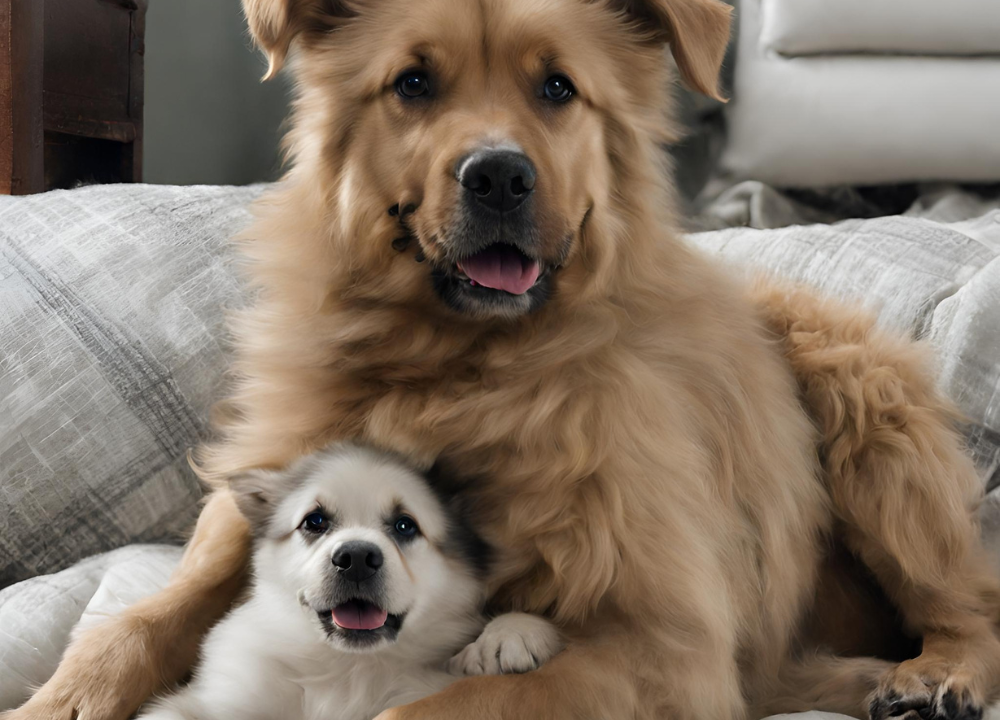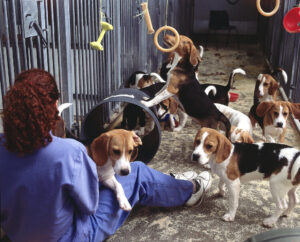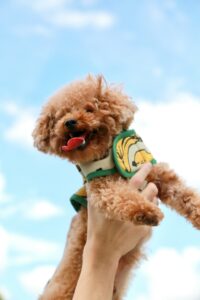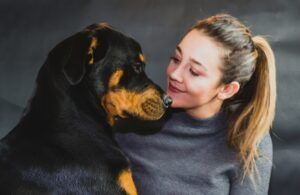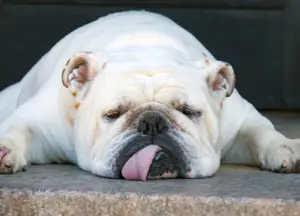Puppies often sit on older dogs as a sign of respect or to seek comfort and security. This behavior is normal and can be beneficial for both dogs in terms of social bonding and nurturing instincts.
Additionally, it may indicate that the older dog is seen as a leader or alpha figure by the puppy. Understanding and allowing this behavior can contribute to a harmonious dynamic between the dogs and foster a sense of security for the puppy.
However, it is important to monitor their interactions to ensure that the older dog is not overwhelmed or stressed by the puppy’s behavior.
Understanding Puppy Behavior
Puppies bring so much joy into our lives with their cute antics and playful nature. However, sometimes their behavior can leave us scratching our heads, wondering why they do what they do. One common behavior that many puppy owners experience is their puppy sitting on their older dog. So, what’s the reason behind this seemingly odd behavior? In this article, we will delve into the world of puppy behavior and explore why your puppy may choose to sit on your older dog.
Puppies are social animals that thrive in the company of others, whether they are humans or other dogs. When a puppy sits on your older dog, it may be their way of seeking companionship and comfort. Puppies may view older dogs as a source of security and warmth, much like they would with their littermates. It’s their way of feeling safe and protected.
Puppy socialization is a crucial aspect of their development. It helps them understand how to interact with different individuals and animals, establishing important social skills for the future. By sitting on your older dog, your puppy is also learning how to communicate and establish social bonds. It’s an opportunity for them to observe and imitate the older dog’s behavior, gaining valuable insights that will shape their social interactions in the future.
Another reason why your puppy may sit on your older dog is the phenomenon known as imprinting. Imprinting is a critical phase in a puppy’s life, occurring during their early development. It involves the formation of strong attachments to specific individuals or objects, which can influence their behavior later on.
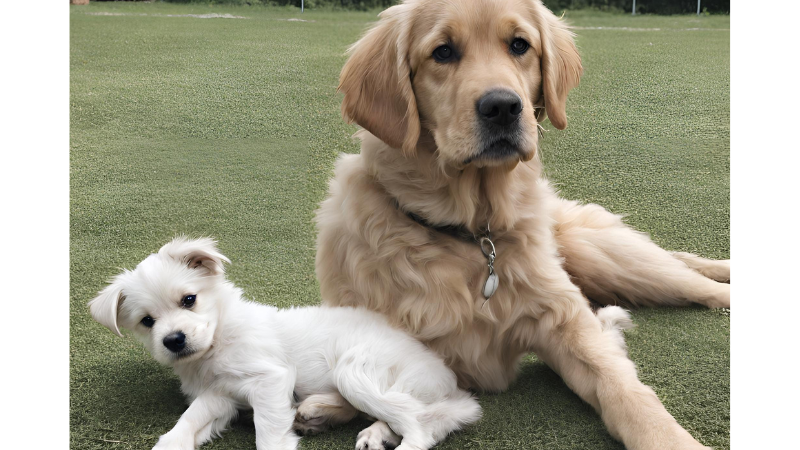
During the imprinting period, puppies are more likely to form strong bonds with their littermates and other dogs they come into regular contact with. By sitting on your older dog, your puppy is essentially saying, “You are important to me. I trust you and want to be close to you.” It’s a display of the attachment they have formed with your older dog, which can have a profound impact on their future relationships.
Being pack animals by nature, dogs have an innate understanding of hierarchy and social structure. This instinctual behavior extends to puppies as well, as they learn to navigate their place within the family unit. Sitting on your older dog can be a way for your puppy to recognize and respect the older dog’s position as a leader or higher-ranking member of the pack.
By observing and interacting with your older dog, your puppy is learning valuable lessons about the dynamics of a pack. They are learning how to establish their place in the hierarchy and how to behave accordingly. Sitting on your older dog is their way of showing respect, acknowledging the older dog’s authority, and seeking guidance and protection.
In conclusion, the behavior of a puppy sitting on your older dog is rooted in their natural instincts and development. It’s a combination of seeking companionship, social learning, imprinting, and understanding hierarchy. While it may seem strange to us, it’s a normal part of their growth and development. So, the next time your puppy curls up on your older dog, appreciate the lessons they are learning and the bonds they are forming.
Reasons Why Puppies Sit On Older Dogs
When it comes to puppies and older dogs, it’s not uncommon to see a puppy sitting on top of their older companion. This behavior might seem strange to us, but there are actually a few reasons why puppies tend to do this. In this article, we will explore the various reasons why puppies sit on older dogs.
Seeking Comfort And Security
One of the main reasons why puppies sit on older dogs is because they seek comfort and security. Puppies are naturally drawn to their older counterparts because they provide a sense of safety and well-being. Just like human children are often comforted by the presence of their parents, puppies feel the same way.
Puppies enjoy the warmth and feeling of closeness that sitting on an older dog provides. It makes them feel protected and secure, especially when they are in new or unfamiliar environments. It’s as if they are saying, “I trust you to keep me safe.”
Mimicking Pack Behavior
Puppies are pack animals by nature, and they are born with an instinctual desire to be part of a group. When a puppy sits on an older dog, it is actually mimicking a behavior that is deeply ingrained in their DNA.
In the wild, pack members often huddle together to provide warmth and protection. By sitting on top of an older dog, the puppy is imitating this natural behavior. It’s a way for them to create a sense of belonging and establish their place within the pack.
Learning From The Older Dog
Puppies are in a constant state of learning and observing their surroundings. When they sit on an older dog, they are not only seeking comfort but also taking the opportunity to learn from their elder.
Older dogs have a wealth of experience and knowledge that they can pass on to the younger generation. By sitting on an older dog, puppies can observe their behavior, such as how to navigate social interactions or respond to certain stimuli. It’s like having a mentor by their side.
| Reasons Why Puppies Sit on Older Dogs |
|---|
| Seeking Comfort and Security |
| Mimicking Pack Behavior |
| Learning from the Older Dog |
In conclusion, when puppies sit on older dogs, it is often because they are seeking comfort and security, mimicking pack behavior, and learning from their elder companion. As humans, it’s important for us to recognize and understand these reasons so that we can create a safe and nurturing environment for our furry friends.
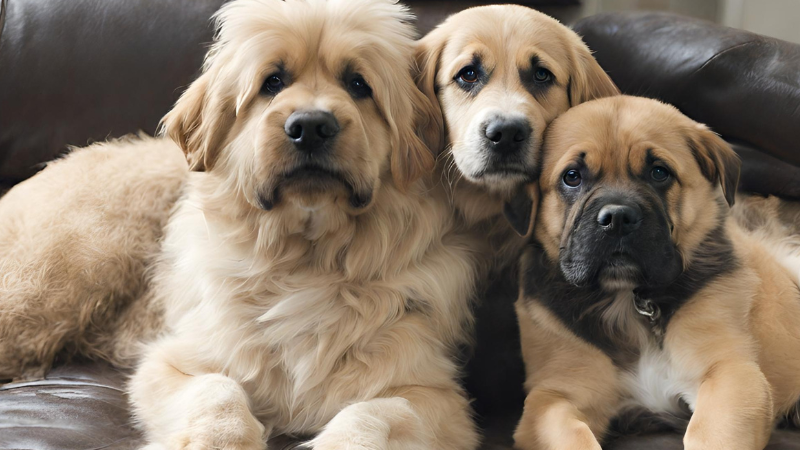
The Role Of Dominance And Submission
When puppies sit on older dogs, it can be a display of dominance and submission within their canine hierarchy. This behavior is natural and helps establish the pecking order among the pack members.
Establishing Pack Hierarchy
In order to understand why puppies often sit on older dogs, we must delve into the fascinating world of dominance and submission within a canine pack. Dogs, descendants of wolves, have a naturally hierarchical social structure. This means that they are wired to establish and maintain a pecking order, or pack hierarchy, in their group. Establishing pack hierarchy serves several important purposes, such as promoting stability, reducing conflicts, and ensuring efficient cooperation.
When a new puppy enters the household, they instinctively seek to find their place within the pack. This involves learning the rules, boundaries, and social dynamics of their new environment. Interaction with an older dog can help the puppy understand their position in the family unit. By sitting on the older dog, the puppy is essentially expressing a desire to show deference and respect. It’s a way of acknowledging the older dog’s authority and seeking their approval.
Submission As A Natural Behavior
In the world of dogs, submission is a natural behavior that serves a specific purpose. It is not a sign of weakness or inferiority, but rather a way of maintaining social order and reducing conflict. Dogs communicate their submission through various body language cues, such as lowered posture, averted eye contact, and passive behavior. Sitting on an older dog can be seen as a submissive behavior, as the puppy is essentially placing themselves in a lower position.
It is important to note that submission is a two-way street. Older dogs also play a crucial role in maintaining the pack hierarchy by accepting or rejecting the submissive behavior of the puppy. By allowing the puppy to sit on them, older dogs are reinforcing their position as the more dominant member of the pack. This interaction helps establish a clear pecking order within the household and contributes to the overall stability and harmony of the pack.
Potential Issues And Solutions
When you bring a new puppy into a household that already has an older dog, it is common for the puppy to gravitate towards the older dog. One behavior you may notice is that your puppy tries to sit on your older dog. While this may seem harmless at first, it can potentially lead to issues if not addressed properly. In this section, we will explore the potential issues that can arise from this behavior and provide some solutions to help you and your furry friends live harmoniously together.
Age And Health Considerations
Before we dive into the solutions, it is crucial to take into account the age and health considerations of your older dog. Older dogs tend to have less patience and may not appreciate the lively energy of a playful puppy sitting on them. Additionally, older dogs may have certain health conditions such as arthritis or joint pain that can make it uncomfortable for them to have the added weight of a puppy on their body. It is essential to consult with your veterinarian to ensure that your older dog is in good health and can handle the interactions with the puppy.
Ensuring A Safe Environment
To prevent any potential issues, it is crucial to create a safe environment for both your puppy and older dog. Here are some steps you can take:
- Provide separate resting areas: It is essential to have separate spaces for your puppy and older dog to rest and relax. This allows both dogs to have their own personal space and reduces the likelihood of the puppy sitting on the older dog.
- Supervise interactions: Keep a close eye on the interactions between your puppy and older dog. If you notice the puppy attempting to sit on the older dog, gently redirect the puppy’s attention to a toy or treat. This helps to establish boundaries and redirects their focus towards positive behaviors.
- Training and socialization: Invest time and effort into training your puppy to understand basic commands such as “sit,” “stay,” and “leave it.” These commands will help you redirect your puppy’s behavior when necessary. Socializing your puppy with other dogs and people will also contribute to their overall behavior and understanding of appropriate boundaries.
Introducing Training Techniques
To correct the behavior of your puppy sitting on your older dog, you can employ a few training techniques:
- Positive reinforcement: Reward your puppy with treats and praise when they exhibit appropriate behavior, such as sitting beside your older dog rather than on them. Consistently reinforcing this positive behavior will help your puppy understand what is expected of them.
- Distract and redirect: If you notice your puppy attempting to sit on your older dog, gently distract them with a toy or treat and redirect their attention to a different activity. This will help break the habit and establish more appropriate behaviors.
- Physical barriers: You can use physical barriers such as baby gates or crates to separate the areas where your puppy and older dog spend their time. This allows for controlled interactions and reduces the opportunity for the puppy to sit on the older dog.
By implementing these solutions and techniques, you can create a harmonious environment for both your puppy and older dog, promoting positive interactions and a happy coexistence.
Training And Socialization Tips
When bringing a new puppy into a household with an older dog, it’s important to facilitate a smooth and positive relationship between the two. This can be achieved through effective training and proper socialization techniques. By implementing these training and socialization tips, you can ensure that your puppy sits on your older dog in a respectful manner and fosters a harmonious bond with their canine companion.
Positive Reinforcement
Utilizing positive reinforcement is a crucial aspect of training your puppy to sit on your older dog. This training technique focuses on rewarding desired behavior, encouraging your puppy to repeat it. Each time your puppy sits beside or on your older dog willingly, offer them praise, affection, or a small treat as a reward. This positive reinforcement helps create a positive association with sitting on your older dog, establishing a cooperative and respectful relationship between the two.
Separate Training Sessions
In addition to positive reinforcement, engaging in separate training sessions for your puppy and older dog is essential. This allows you to provide individual attention and focus on their specific needs during the training process. By conducting separate sessions, you can concentrate on teaching your puppy the “sit” command and respect boundaries around your older dog without any distractions. This approach helps your puppy understand that sitting on your older dog is a behavior that needs to be learned and practiced separately from other commands.
Gradual Introduction To Other Dogs
As part of your puppy’s socialization, it’s important to gradually introduce them to other dogs. This introduces them to different personalities, sizes, and temperaments, helping them develop social skills and confidence. To ensure a successful introduction, start by arranging controlled playdates with friendly and tolerant dogs. Allow the interactions initially in a neutral and supervised environment, monitoring how your puppy sits or interacts with other dogs. Over time, as your puppy becomes more comfortable and exhibits appropriate behavior, you can increase the duration and complexity of the playdates, ultimately enabling them to sit on your older dog and engage in positive social interactions with other canines.
Frequently Asked Questions On Why Does My Puppy Sit On My Older Dog
Why Is My Puppy Obsessed With My Older Dog?
Your puppy may be obsessed with your older dog due to a natural desire for companionship and learning from them. It’s common for puppies to seek guidance and comfort from older dogs as they navigate their new surroundings.
Can A Puppy Be Dominant Over An Older Dog?
Yes, a puppy can display dominance over an older dog due to their assertive behavior. This is more likely to happen if the puppy is not properly socialized or if the older dog is submissive. It’s important to establish leadership and reinforce positive behavior in both dogs to foster a harmonious relationship.
Why Does My Puppy Stand Over My Older Dogs Head?
Puppies standing over older dogs could indicate dominance or playfulness. It’s their way of asserting themselves or engaging in play.
Why Does My Puppy Keep Bothering My Older Dog?
Your puppy may be bothering your older dog because it wants to play, seek attention, or establish dominance. It’s important to monitor their interactions and establish boundaries to ensure both dogs are comfortable and safe. Providing enough exercise and mental stimulation for your puppy can also help redirect their energy.
Why Does My Puppy Sit On My Older Dog?
When puppies sit on older dogs, it is often a sign of seeking comfort and closeness within the pack hierarchy.
Conclusion
Understanding why your puppy sits on your older dog is crucial for maintaining a harmonious relationship between them. It could be a sign of dominance, seeking comfort, or simply wanting attention. By observing their body language and providing proper training and enrichment, you can create an environment where both dogs feel safe and respected.
It’s important to remember that patience and consistency are key in addressing this behavior and promoting a peaceful dynamic between your furry companions.
